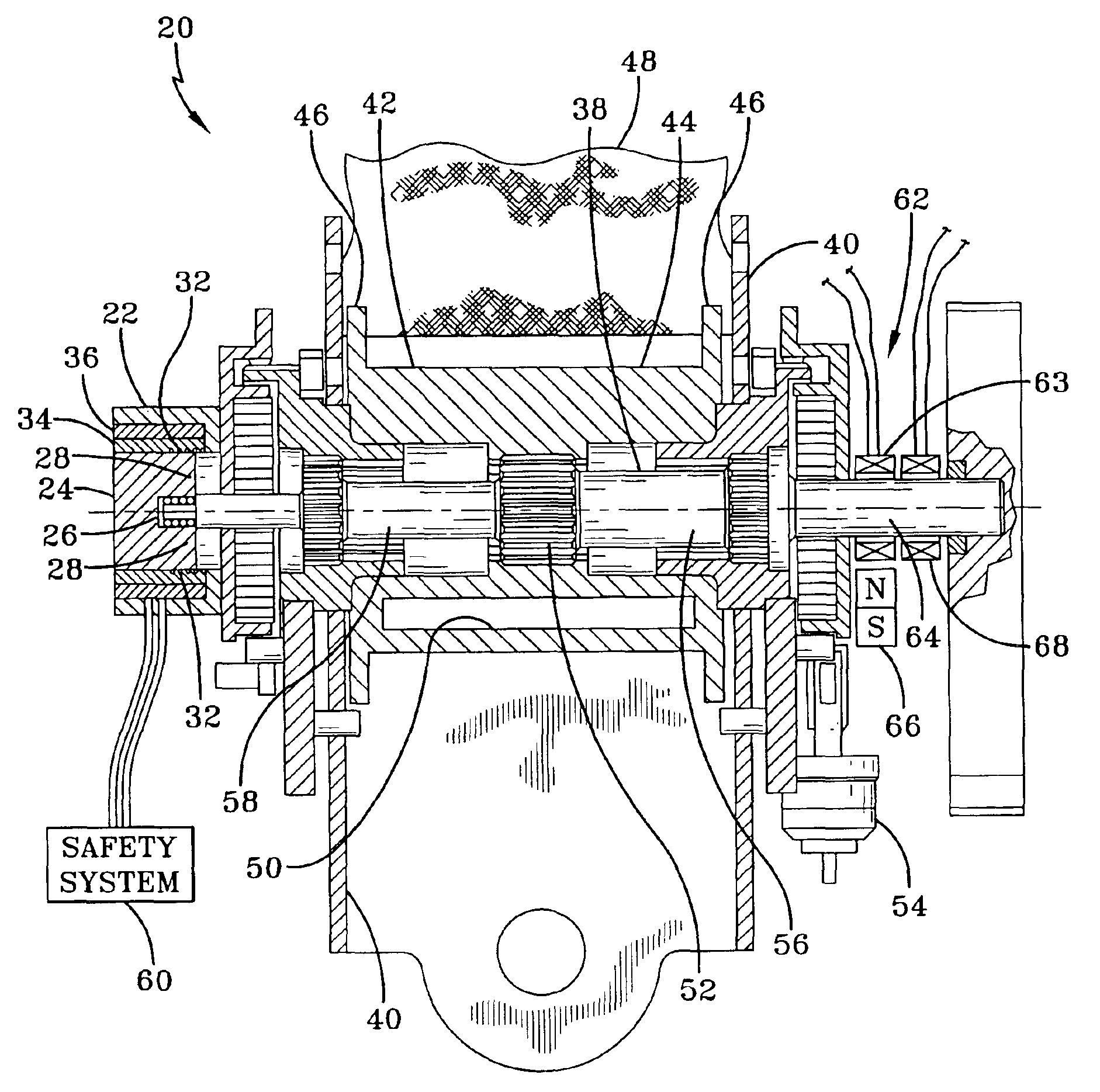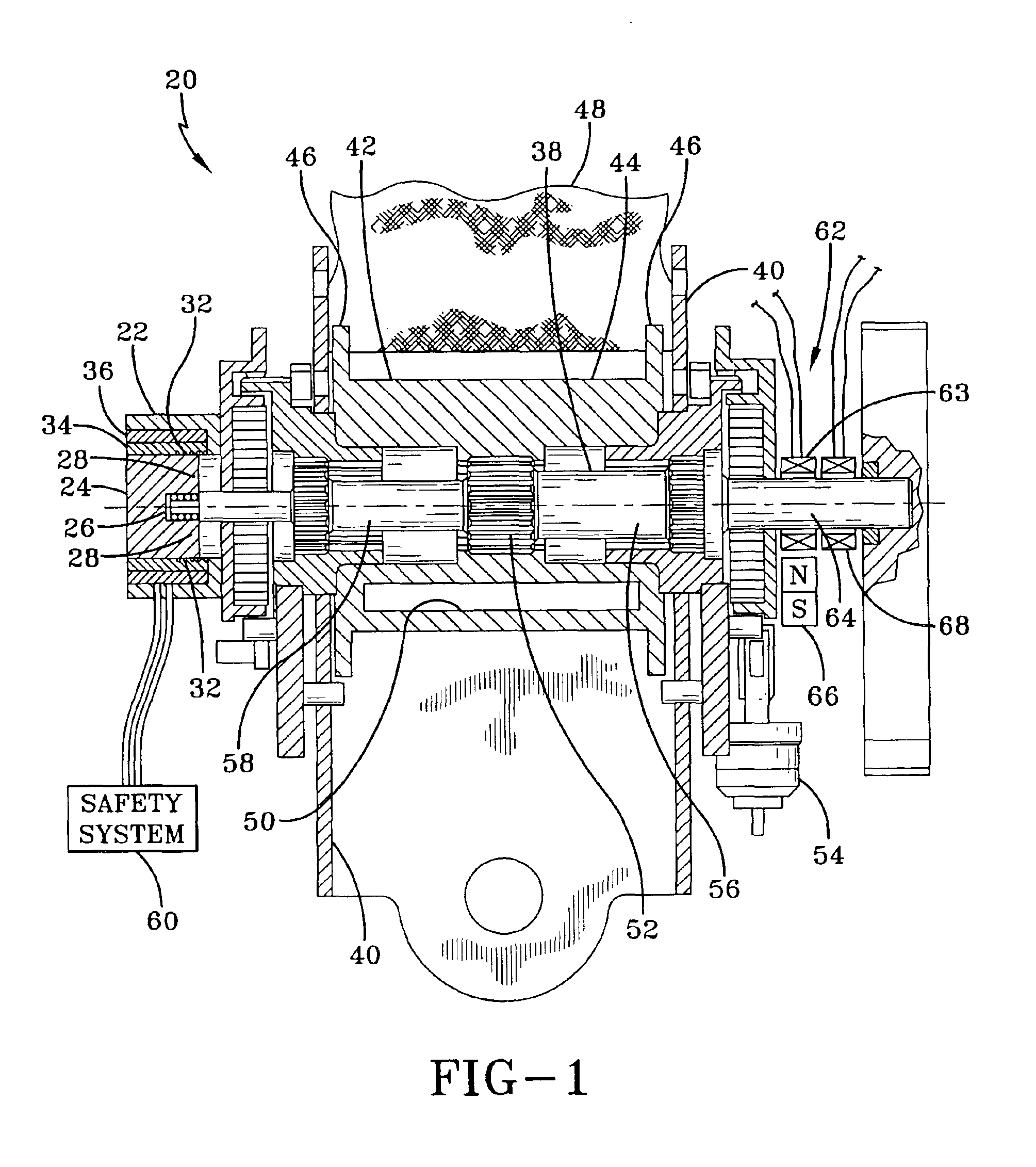Seat belt retractor torsion rod activity sensor
a technology of activity sensor and seat belt, which is applied in the direction of instruments, pedestrian/occupant safety arrangements, force/torque/work measurement apparatus, etc., can solve the problems of airbag replacement, obvious need for replacement, and risk of airbag deploymen
- Summary
- Abstract
- Description
- Claims
- Application Information
AI Technical Summary
Benefits of technology
Problems solved by technology
Method used
Image
Examples
Embodiment Construction
[0018]Referring more particularly to FIGS. 1-4, wherein like numbers refer to similar parts, a seat belt retractor 20 incorporating a load limiter in the from of a yielding torsion rod 38 is shown FIG. 1. The seat belt retractor 20 is similar to the seat belt retractor shown in U.S. Pat. No. 6,012,667, however the seat belt retractor 20 has been modified by the addition of a magnetostrictive sensor 22. The magnetostrictive sensor 22 is shown in more detail in FIGS. 2 and 3. The magnetostrictive sensor 22 has a cylindrical biasing magnet 24 which has a slot 26 which extends through the biasing magnet 24 and which forms two legs 28 about which a wire 30 is wound to form two coils 32. The biasing magnet 24 and the wire 30 forming the coils 32 are surrounded by an epoxy layer 34 which in turn is surrounded by a stainless steel case 36.
[0019]The magnetostrictive effect was first reported by Joule in 1847. The magnetostrictive effect describes a small change in physical dimensions of ferr...
PUM
| Property | Measurement | Unit |
|---|---|---|
| magnetostrictive | aaaaa | aaaaa |
| energy | aaaaa | aaaaa |
| plastic yielding | aaaaa | aaaaa |
Abstract
Description
Claims
Application Information
 Login to View More
Login to View More - R&D
- Intellectual Property
- Life Sciences
- Materials
- Tech Scout
- Unparalleled Data Quality
- Higher Quality Content
- 60% Fewer Hallucinations
Browse by: Latest US Patents, China's latest patents, Technical Efficacy Thesaurus, Application Domain, Technology Topic, Popular Technical Reports.
© 2025 PatSnap. All rights reserved.Legal|Privacy policy|Modern Slavery Act Transparency Statement|Sitemap|About US| Contact US: help@patsnap.com



